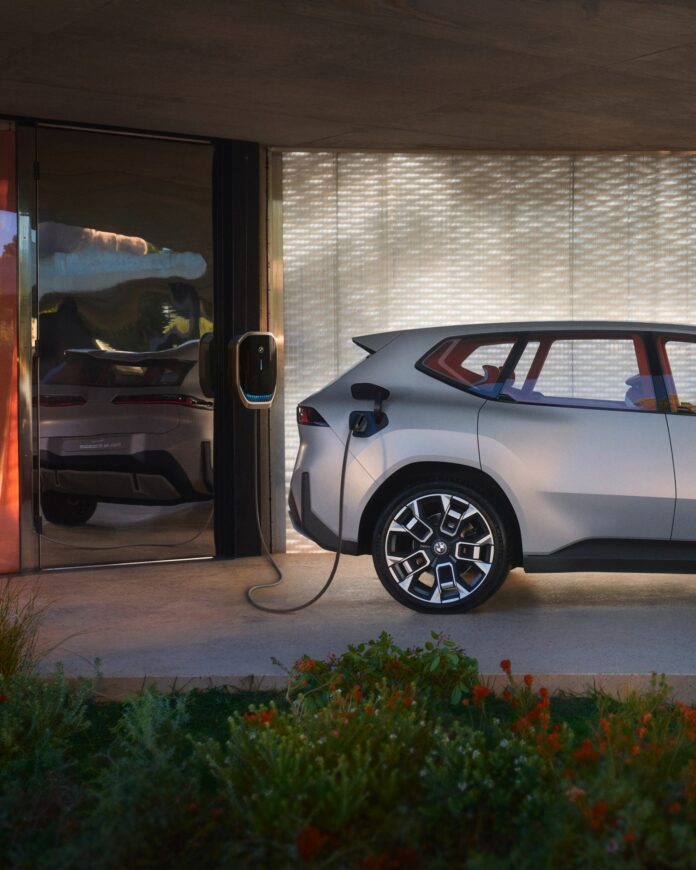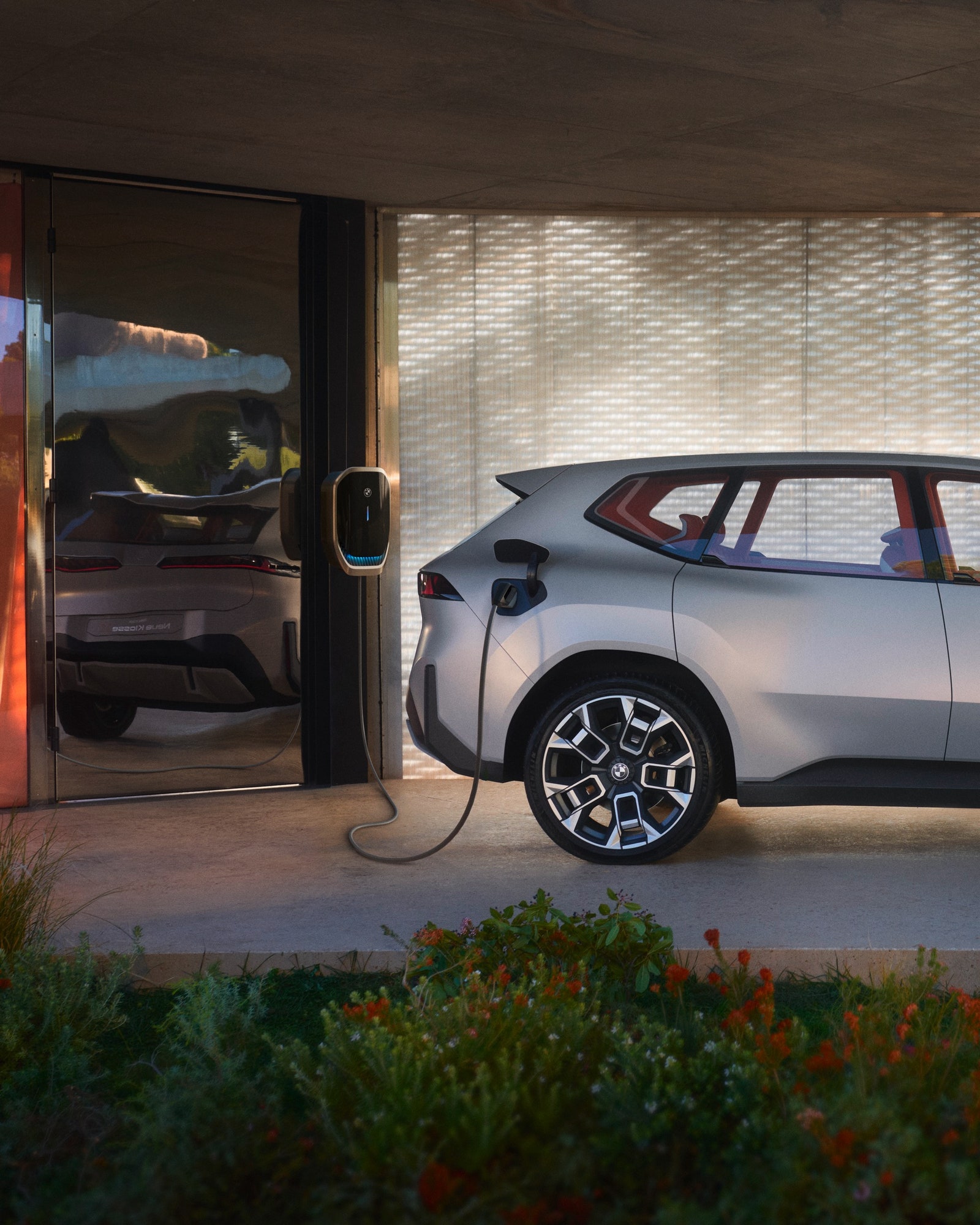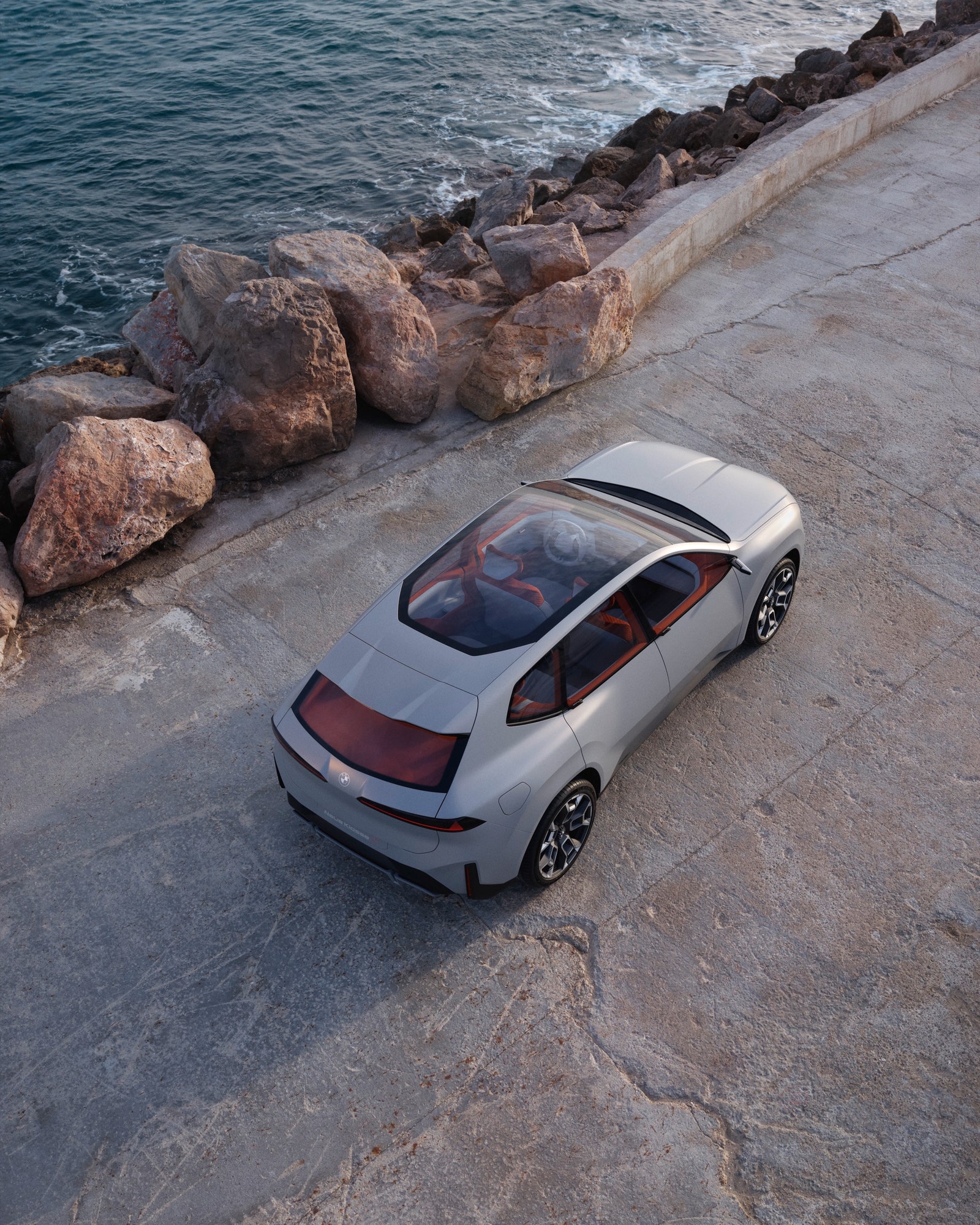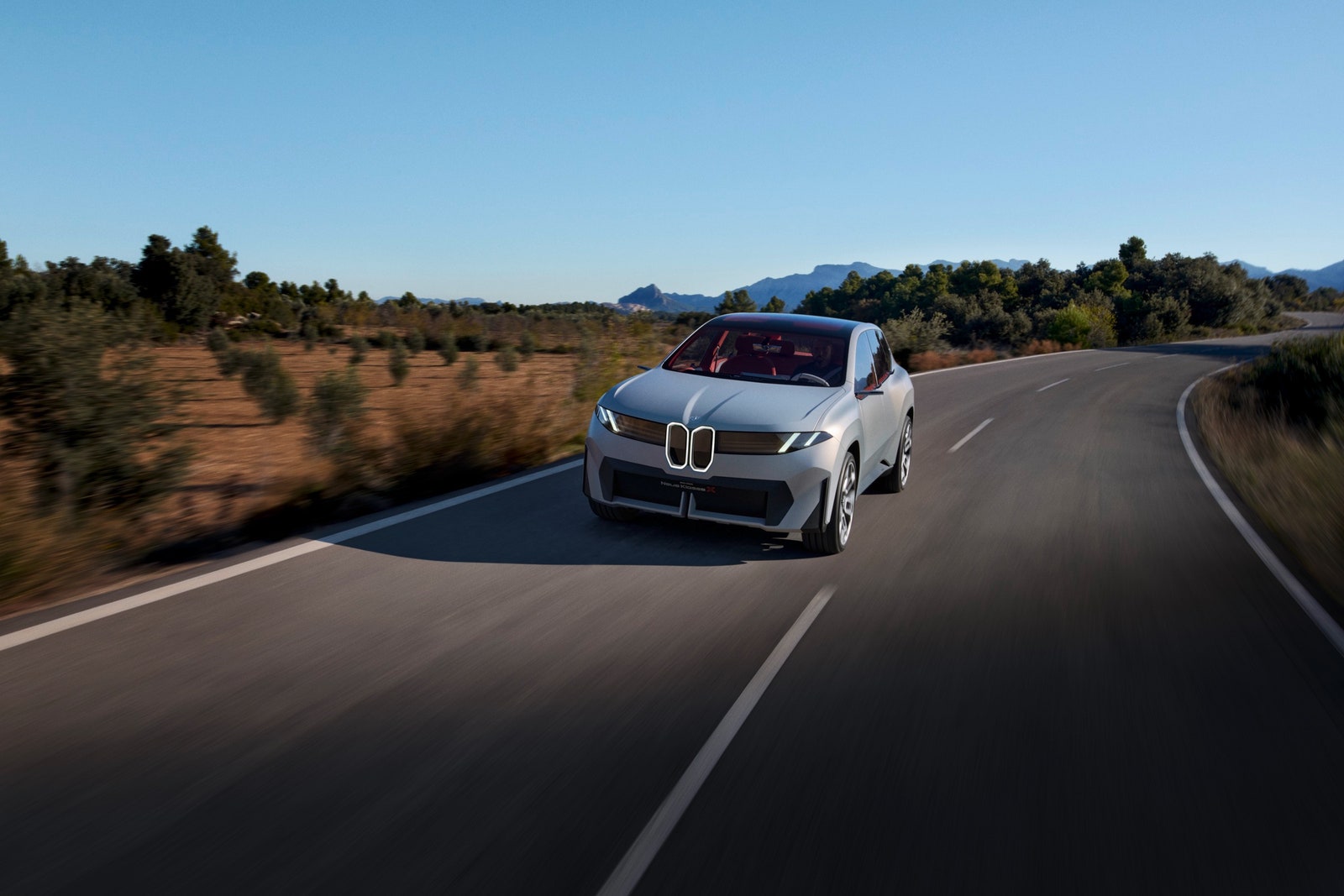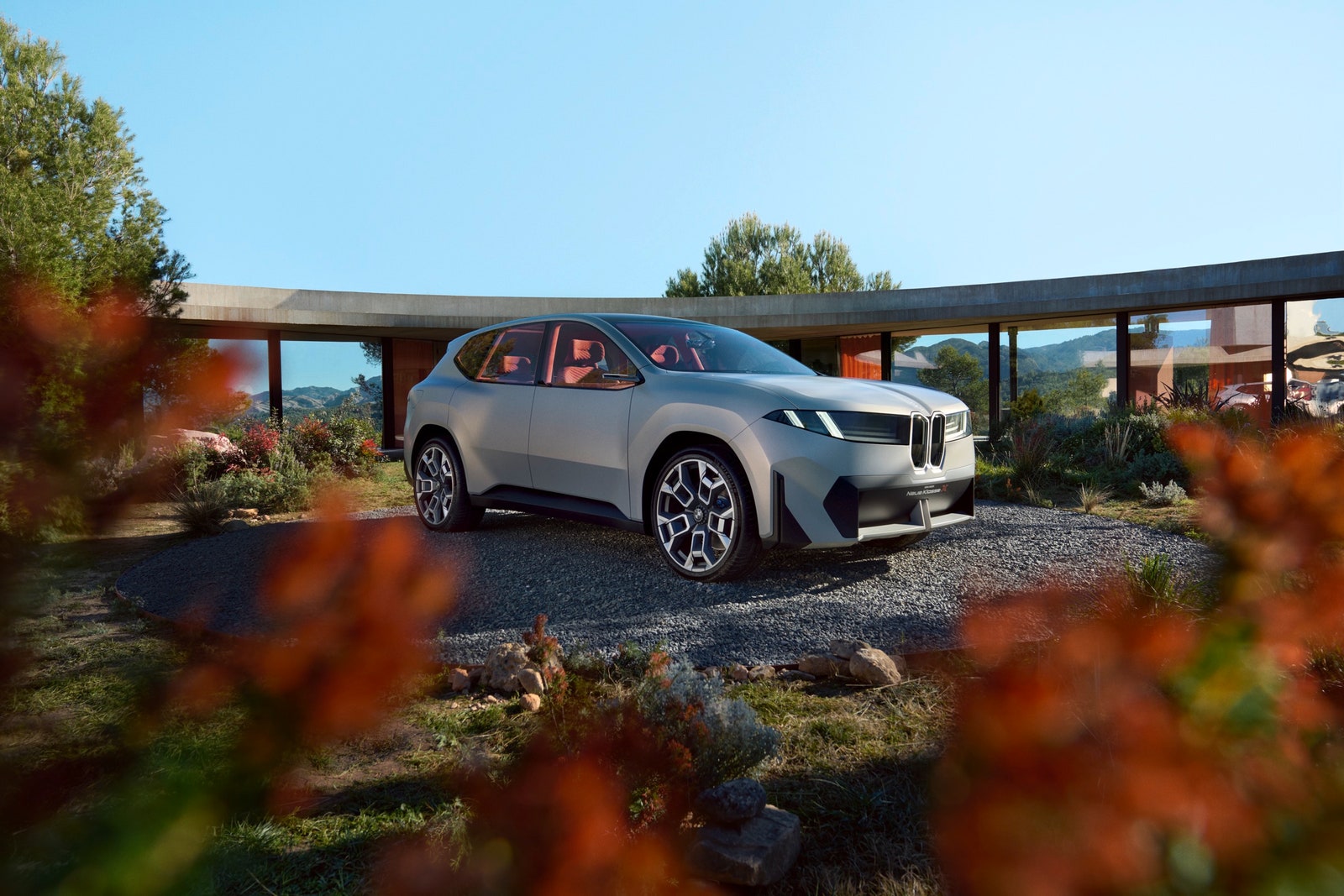“The Neue Klasse is much more than just a car or a specific concept,” BMW chairman Oliver Zipse says. “It is redefining the BMW brand—and, at the same time, will be more BMW than ever.” Bear that in mind as you take in the Vision Neue Klasse X, a crisply modern concept that previews the car scheduled to replace the current iX3 when it goes on sale in about 18 months’ time.
The second Neue Klasse concept, following last year’s well-received E Ink sedan design study, the coming iX3 will be the first of six cars based on BMW’s new modular EV platform. About that name: Neue Klasse invokes the memory of the model that arrived in 1962 and whose success saved the company from an impending existential and fiscal crisis. It also established a design template that BMW evolved with celebrated acuity over the coming decades.
The company currently stands accused by some of bonfiring that legacy in pursuit of polarization. The new Neue Klasse philosophy aims to rein that in whilst also setting out a plan for an entirely new generation of all-electric BMWs—cars that supposedly will reimagine every aspect of the driving and ownership experience.
To put things in perspective, the Neue Klasse project represents the single biggest financial investment in BMW’s history.
BMWs Now Have a ‘Joy’ Brain
Much of this money has been spent on the technology that underpins it all. The Neue Klasse range will use the sixth generation of BMW eDrive tech, with new batteries in 75-, 90-, and 105-kWh capacities and an 800-volt electric architecture that will improve charging speeds by up to 30 percent.
The battery system has been developed in-house by BMW and uses newly designed liquid-cooled cylindrical cells, 95 mm or 120 mm in height depending on which model they’re fitted in. There’s more nickel in their composition but less cobalt compared with today’s batteries, and overall energy density is reportedly 20 percent improved.
The Neue Klasse cars will be capable of charging at up to 350 kilowatts on the most powerful DC chargers, another contributor to reduced charging times. BMW claims 300 kilometers (186 miles) of range can be replenished in just 10 minutes. The newly designed synchronous e-motors will also be more efficient, thanks to new windings, improved cooling, and a redesigned stator.
But this is nothing compared to BMW’s fancy new computer controller, nicknamed the “heart of joy.” This combines hardware and software so that the powertrain and all the dynamic functionality—braking and stability and traction control systems—are governed by one electronic brain rather than multiple sub-processors.
Conventional ECUs suffer a time lag of 10 to 20 milliseconds, a figure BMW says its new proprietary box of tricks reduces to one millisecond. Paradoxically, this digital leap should give the Neue Klasse cars a more old-school analog feel in terms of handling smarts, and should imbue them with the sort of traits many people feel EVs lack. BMWs have always been charismatic, and the challenge to develop that in the electrified age is now on.
“The ‘heart of joy’ effectively takes 30 years of experience and blends it into a single control unit,” BMW chief technical officer Frank Weber tells WIRED. “Everything that is driving-performance-related, chassis-control-related, powertrain-related—it’s all integrated into one control unit. If you love the idea of the ultimate driving machine, there are functions in there that are crazy. It’s the same for the infotainment system. To do it properly for your customers, you have to own the critical software stacks and the software development process.”
Crazy M Performance Promise
Weber insists that increasing the size of batteries is incompatible with BMW’s sustainability goals but promises authentic BMW vibes from its M-division high-performance derivatives. “Neue Klasse is ambitious and will do things far above what we have today,” he claims. “Future M cars will have close to a megawatt of power (1,340 bhp) with the ability to control each individual wheel.”
“Some people might miss the sound of a combustion engine but definitely not how the car behaves. It’s incredible. Everything required for M is baked into this new technology platform. As our engineers learned more about the capabilities of the system, so their confidence increased. It’s about how the car moves. And the control possibilities with electric cars means you can go crazy.”
Now back to the Vision X. If the iX and i7 are too much for you, then this new concept suggests a definite rebalancing of the aesthetic order. It’s a clean, modern looking car with a powerful but more nuanced sense of identity.
“We wanted to define the true-to-the-bone heritage of BMW,” head of i design Kai Langer tells me, “and the Vision X is our pure essence. Try to remove a line from this car and you just won’t be able to. The Vision X is clearly a BMW, even though it has completely different proportions. It’s uncomplicated, reduced, bold and alive.”
Getting 3D Grilled
Interestingly, there are shades of the original 02 series, which debuted in 1966, as well as hints of the beloved ’70s 3.0 CSL, and even the early ’80s E30 3 series. The Vision X wears these influences lightly, but the fact that they’re there at all suggests that a rethink has occurred. The vertical double kidney grille will be reserved for BMW’s X SUV models henceforth, a subtle horizontal treatment being used on sedans and sports cars.
On the Vision X, the grille element is rendered as more of a 3D sculpture with backlit elements. These illuminate as the driver approaches. The front head and rear LEDs contain 3D-printed sections that alter in lighting intensity and use a mirrored effect to create a sense of depth. The signature Hofmeister kink—a little flick up in the rear side glass that features on many BMW models—is done here with a reflective print rather than chrome trim. Sustainable, you see.
“No individual BMW model influenced this car,” Langer says, “but we looked at what was done right. Things like the large glass surface area, because I wanted to have light flooding the interior. We wanted to create something that looks light, because that implies agility and dynamism.”
Importantly, the Vision X demonstrates BMW’s commitment to the ‘circular’ economy, and uses lots of secondary materials in its interior. There’s a new four-spoke wheel, and a simplified central display. The i-Drive controller, a staple of every BMW since it arrived in 2001’s controversial 7 series, has gone.
Sustainability means determining what’s truly essential and abandoning anything that’s deemed superfluous. In this case, the traditional instrument display ahead of the driver. Instead, welcome Panoramic Vision, which projects key information across the width of the windscreen base. A 3D head-up display is also present. Items on the central display can be swiped onto the Panoramic readout.
The steering wheel even includes a sound-mixing function called Hypersonx, which allows the driver to play with sound effects. The interior’s lower door area and center console are made of a plant-and-mineral-based material, with maritime plastics used elsewhere. Parts of the Vision X’s exterior are made of recycled mono-materials.
“The world is in a difficult place right now,” Langer says. “We’re demonstrating that you can be sustainable and still have fun.”
Source : Wired



